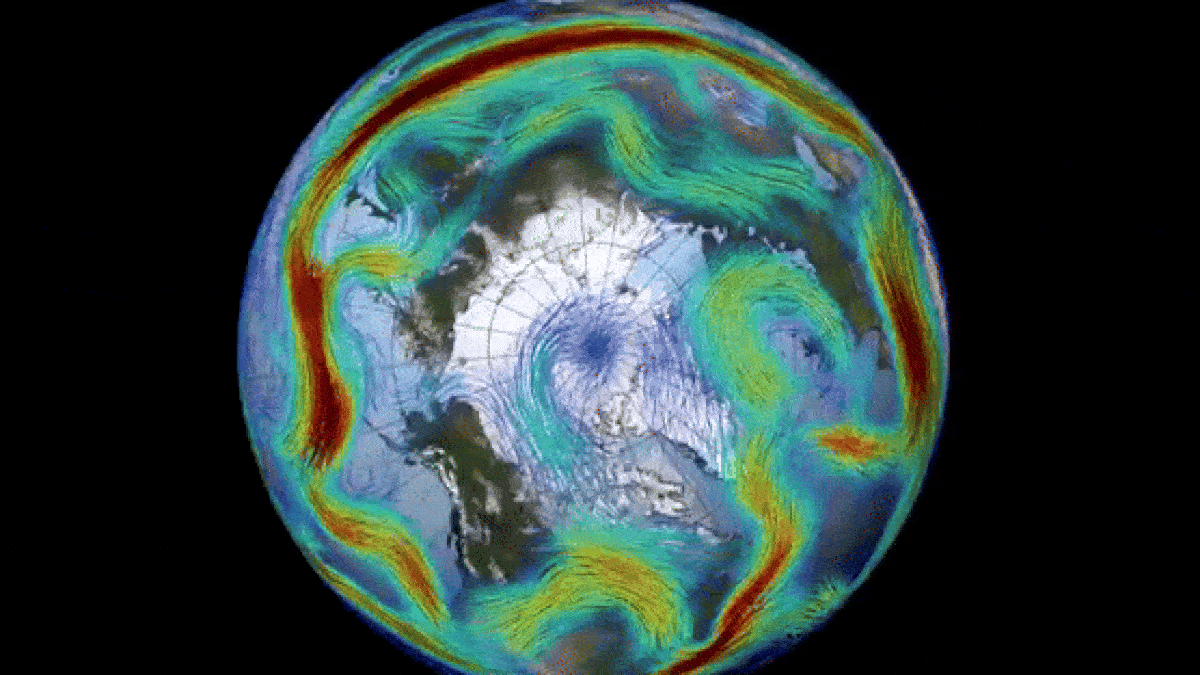Dr R K Chadha
An Automatic Weather Station (AWS) of the India Meteorological Department at Mungeshpur, New Delhi, recorded the highest temperature of 52.9 degrees Celsius on 29 May 2024. This was the highest-ever temperature recorded in India, breaking all previous records. Such record-breaking temperatures and severe heatwave conditions in north India are not isolated events as several other countries across continents in the southern hemisphere experienced similar above-normal temperatures this year.
From Columbia and Brazil in Latin America to South Africa, Gabon, Kenya, South Sudan, Algeria, Tunisia, and Guyana to Indonesia, temperatures soared to more than 3 to 4 degrees Celsius above normal. Such severe heatwave conditions could be related to dramatic spikes in temperatures in the stratosphere that extend up to 50 km in the upper atmosphere. This is causing unprecedented instability that is leading to the splitting of the Antarctic polar vortex for the first time in over two decades. Scientists believe that this is triggering significant warming in Antarctica and unusually hot, dry summers across continents in the southern hemisphere from Australia to Africa to South America, according to a recent report in the New Scientist journal.
First, let us understand how it works. The global weather patterns are connected to the movement of hot and cold air in the atmosphere. While air is a mixture of gases making up the Earth’s atmosphere, wind is referred to as the movement of this air due to differences in atmospheric pressure. The primary driver of the generation of winds is the uneven heating of Earth from solar radiations due to its tilt and rotation that causes evaporation of moisture leading to upward movement of humid air as it is lighter than dry and cold air. The rising hot air creates a partial vacuum at the ground level and the surrounding cooler air is sucked in creating areas of low and high pressures in the atmosphere. As the rising hot air cannot keep on rising, it eventually begins to move sideways as it cools. At some point, it begins to sink reaching the ground where it gets pulled again into the partial vacuums under updrafts. This happens at all scales, from isolated thunderstorms to global convection cells. And, because the Earth is rotating, the air motion gets deflected due to the Coriolis Effect which is the deflection of air to the right in the northern hemisphere and the left in the southern hemisphere.
Coming back to the Antarctic polar vortex, it’s just a large mass of cold air at the polar regions, both over the Antarctic as well as Arctic regions. This happens due to global wind circulation patterns and also because the polar regions receive less light per unit area from the sun. These vortices in the atmosphere are driven by the temperature difference between the warmer equatorial regions and the colder poles. But there is a difference between the Antarctic and Arctic polar vertices due to their geographic locations. Antarctica is surrounded by an ocean that forms a buffer zone between the nearest continents where temperature gradients are similar to that around the pole making the southern polar vortex more uniform and stable. Contrary to this, the Arctic region is surrounded by ocean and land around the poles that have different temperatures. This causes the winds of the Arctic polar vortex, created by the general cold pole and warm equator, to vary on finer scales as it traverses these hot and cold regions. As a result, the northern hemisphere polar vortex has more “wobbles” in it in comparison to the southern hemisphere polar vortex which is more stable.
Scientists studying the behaviour of the Antarctic polar vortex observed that the southern vortex has weakened dramatically with wind speeds plummeting, allowing cold air to escape and warm air to invade Antarctica. They have warned that repeated wind slowdowns could lead to a sudden and dramatic change in the vortex’s pattern which is showing a stretching on either side and may probably split exacerbating the already extreme conditions in the southern hemisphere. Such kind of shifts and splits are often observed in the Arctic polar vortex that is caused by sudden stratospheric warming pushing the cold polar air further south creating extreme weather events in Europe.
The warming of the stratosphere may be attributed to climate change due to anthropogenic activities, events like the Hunga Tonga-Hunga Ha’apai volcanic eruption in the southern Pacific on January 15, 2022, adding up to the dramatic spikes in temperatures in the atmosphere, making the southern polar vortex unstable. This volcanic eruption produced the largest underwater explosion ever recorded by modern scientific instruments, blasting an enormous amount of water and volcanic gases higher than any other eruption in the satellite era. It is the largest recorded since the eruption of Krakatoa in 1883 in the Sunda Strait in the Indonesian archipelago. The eruption triggered tsunami waves of up to 15m that struck the west coast of Tongatapu, ‘Eua, and Ha’apai in Tonga, South Pacific Ocean.
The implications of shift and probable split in the southern polar vortex may lead to increased temperatures in Antarctica leading to shrinkage of ice cover leading to sea level rise shortly. The continents in the southern hemisphere may witness severe heatwaves and drought conditions following this phenomenon. The heatwaves in 2024 across continents are a pointer to what is going to come. It is high time that climate change is taken seriously by keeping aside the politics of it, before it becomes irreversible. It is better to act and repent than not to act and regret.






